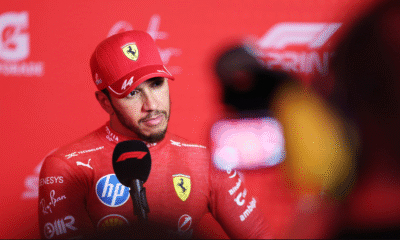Economy
Soaring food prices to be felt most in emerging markets and developing countries: IMF
It is probable that the effecting of rising food prices would be most felt by consumers in emerging markets and developing countries still wrestling with the effects of the COVID-19 pandemic. At the start of the pandemic, food supply chain disruptions, a shift from food services towards retail grocery, and consumer stockpiling pushed up consumer food price indices in many countries.
The IMF says that consumer food inflation peaked in April 2020, even though producer prices of primary commodities, including food and energy, were declining sharply as demand for primary food commodities was disrupted. By early summer 2020, however, various consumer food prices had moderated, pushing down consumer food inflation in many countries.
While consumer food prices may have increased, it is an exaggeration to say that they are currently rising at their fastest pace in years. They are also not currently contributing to headline inflation, though they may do so later this year and in 2022. Producer prices, on the other hand, have recently soared. But it takes at least 6-12 months before consumer prices reflect changes in producer prices. Also, on average, the pass-through from producer to consumer prices is only about 20%. This is because consumer food prices include the shopping costs of primary food commodities, the processing, marketing and packaging of food, and final distribution costs such as transport costs.
The IMF believes there are three main factors behind the recent rally in producer prices, demand for staples for both human consumption and animal feed has remained high, especially from China, as countries have stockpiled food reserves due to pandemic-related worries about food security. Moreover, the recent 2020-21 La Nina episode, a global weather event occurring every few years, has led to dry weather in key food exporting countries, including Argentina, Brazil, Russia, Ukraine, and the US. In some cases, this has caused harvests and harvest outlooks to fall short of expectations. As demand has outpaced supply, US and world stocks-to-use ratios, a measure of market tightness, reached multi-year lows for some staples. Thirdly, strong demand for biofuels increased speculative demand by non-commercial traders, and export restrictions are additional factors supporting world producer prices.
Also Read: Hero Cycles successfully delivers first batch of Made in India e-bikes to Europe
The International Monetary Fund said it is plausible that consumer food price inflation will pick up again in the remainder of 2021 and 2022. The recent sharp increase in international food prices has already slowly started to feed into domestic consumer prices in some regions as retailers, unable to absorb the rising costs are passing on the increases to consumers.
However, it will vary by country. Consumers in emerging markets could experience ever higher increases due to the higher dependency on food imports, such as in sub-Saharan Africa and the Middle East and North Africa. The pass-through from producer prices to consumer prices also tends to be larger for emerging markets. For low-income countries struggling from the pandemic, the effects of further food inflation could be dire and risk a backslide in efforts to eliminate hunger.









































